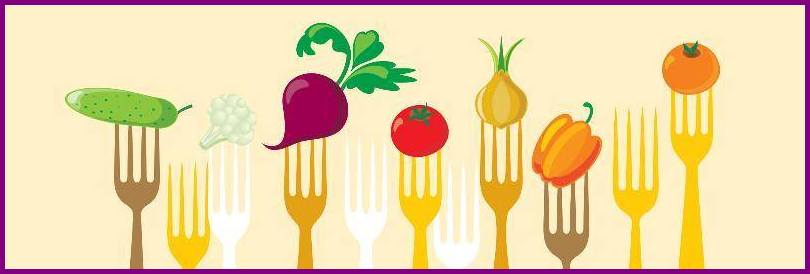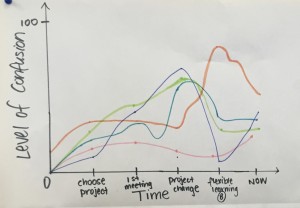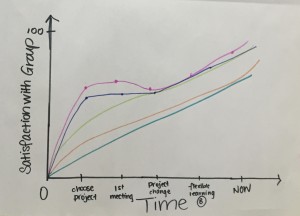Blog Post #4
Executive Summary
Introduction
The Little Mountain-Riley Park Neighbourhood Food Network (LM-RP NFN) aims to improve food access of its residents by increasing accessibility through connecting residents with healthy, affordable, culturally appropriate food through events, gardens, and programs. (“LM-RP Neighbourhood Food Network (NFN)”, n.d.). The Nourish Your Neighbourhood campaign works with local businesses to raise funds for the networks’ program, specifically the Little-Mountain Riley Park community garden.
Asset-based community development (ABCD) is a framework that utilizes the knowledge and resources of community members, challenging the typical needs-based approach to development (Mathie & Cunningham, 2003). We will refer to ABCD principles, with a focus on developing human capacity. It is important to determine what each community already has to offer, and what programs effectively reach people, in order to see how they might extend the success, and work towards community food security.
Inquiry Question
How to effectively recruit local businesses for a fundraising project. We want to gain insight into what encourages or deters a business to participate in a local fundraiser such as the Nourish Your Neighbourhood fundraiser.
Methods
- Augmented and refurbished the business contact list, including updated phone numbers and email addresses for over 122 businesses within the neighbourhood
- Updated the information letter
- Developed an online survey intended for all businesses to fill, regardless of interest in the fundraiser
Results
Out of the 122 businesses that we contacted, we had a survey response from Little Mountain Shop and SweetSalt Bakery & Cafe expressing potential interest. Three businesses, Nesters Market, Earnest Ice Cream and The Locus, actively donated gift cards towards the fundraiser. We have forwarded the survey responses to Joanne and she will likely contact the interested businesses closer to October. The information gathered from the few surveys give insight into the recruitment process and how to effectively engage business for future fundraisers.
Recommendations and Conclusion
In the future, we would ideally recommend in-person contact with businesses. This would establish an initial relationship wherein the manager would have the opportunity to connect a face to the initiative as opposed to a virtual e-mail that can be easily discarded as spam. If this is not possible in all cases, a phone call would be next best method of communication. These methods establish a more personal relationship and interaction with the businesses which may give them more incentive to either participate. In addition, we would recommend having a physical copy of the survey to fill out in person or be verbally completed over the phone would prove beneficial in response volume. We hope Joanne will take these recommendations into consideration and implement them into future fundraising endeavors.
—-
Moment of Significance
What
In our flexible learning session two weeks ago, our group set out to approach the local businesses door-to-door about their potential participation in Nourish Your Neighbourhood. When we wrote our previous blog post, we were filled with much more optimism and perhaps were overzealous with our initial intention of reaching every businesses that did not have a contact email on our list. It should be noted that our list included every food-related business between the boundaries of 16th to 41st Ave, and Knight to Cambie. Hence, our first problem: the time constraint. With the three hours we had for our flexible learning session, including the transportation time required to travel from UBC to the Little Mountain-Riley Park neighbourhood and back, we decided to target Main Street. As we started approaching people door-to-door, we soon realized our second problem: we need to reach managers or store owners.
As it turned out, managers are difficult to find at their business locations on a Monday afternoon. Without a manager present, we were unable to ask for participation in our fundraiser, and we could not gather valid survey responses, so we took down an email and carried on. It was not until we reached the Main Street Honey Shoppe when the store employee – not the manager – asked us what we are fundraising for. We explained that the purpose of the garden is to raise money for the community garden to support food security in the area. He said that this is our selling point, and we should make it a priority in our pitch rather than a secondary aspect. He also said that community members may be wondering why we, as UBC students and outsiders to the community, would be involved. This was a moment of significance for our group because when we made plans for this flexible learning session we did not anticipate the limitations that we faced, nor did we have great consideration of how we would be received by the community.
So What
Almost as if Will read our minds, in Session 11 we discussed how we as a class are coming in as an outside organization with new ideas and imposing them onto the community. As the employee at The Honey Shoppe pointed out, our connection with the Little Mountain-Riley Park Community Food Network was not extremely clear to business owners and community members, and was likely shadowed by the fact that we are outsiders from a university collecting survey data. Typically university knowledge entering the community to assess what is needed is not an asset-based approach, it is usually considered deficit-based (Mathie & Cunningham, 2003). While the Nourish Your Neighbourhood campaign itself takes on an asset-based approach – it aims to add a garden to the neighbourhood to increase the existing state of food security, and which helps to foster citizen-to-citizen connections – it may seem deficit-based depending on who it was coming from. Maybe we were seen as a group of patronizing outsiders trying to save the community, when the purpose of our project is to raise money for a garden that will facilitate the community’s capacity to save itself.
Admittedly when we started this project we had many ideas, suggestions, and perhaps unrealistic expectations. We were optimistic about what we could achieve and were excited about what we could contribute to this campaign, but did not fully consider if our goals were feasible or realistic. Hence, the slight disappointment with the lack of immediate results when we went door-to-door. We made a huge list of businesses but how were we going to reach them all? Did we really think that because we thought the fundraising campaign was a great idea and we are passionate about food security, that others will easily make that same connection? We were unsure of whether community food security would be a motivating factor for business owners to participate, but perhaps that information up front would have made a difference in the way we were perceived – as a group of people advocating for a cause connected to the neighbourhood rather than group simply collecting donations and survey responses.
Now What
In retrospect, at the times when we were able to speak to a manager or store owner, more often than not we received a positive response and an interest in participating. However, the key point to those conversations always revolved around the community garden and how it was relevant to their community. It is possible to consider that if we made our door-to-door pitch very clearly about the garden, and spoke to store employees rather than solely asking for the manager, we would have received more interest, or the employees might have made a greater effort to encourage the manager to participate. It would have been difficult for us to not appear as outsiders simply because of the nature of this class and the timeline of the project. We had a relatively shorter duration with it, and were already discussing how we plan to accomplish a Graceful Dismount (see blog post 3) before we even reached our final flexible learning session. That initial point of contact with the businesses was very likely our first and last exchange before we would return the project to Joanne, so how do we go about avoiding the outsider effect? Perhaps if we had a presence in community it would have been easier to reach out, or if we had a longer commitment with the project to see it through until its launch in October, we would have had a more convincing voice.




